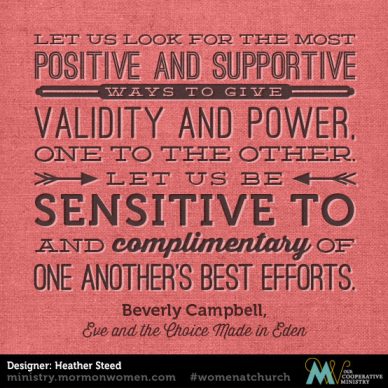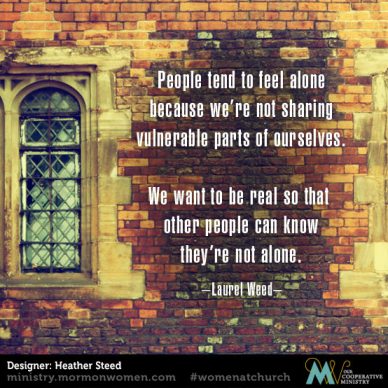The Gospel Doctrine lesson #24: Doctrine and Covenants 26; 28;43:1–7; 50; 52:14–19, “The Faith and Fall of Thomas Marsh” and Ezra Booth and Isaac Morley.”
Mary Ann Evans’ novel, Romola, tells the story of a young woman in an unhappy marriage. On the eve of her wedding, she visits her estranged brother, who receives her coldly and gives her a message, a warning vision couched in frightening symbols and full of dark premonitions of danger relating to her upcoming marriage. Romola is confused by the obscure dream symbols and offended by her brother’s demeanor. She marries despite his warning and never hears from him again. “The revelation that might have come from the simple questions of filial and brotherly affection had been carried into irrevocable silence.”1
This story shows the often delicate balance between truth and personal relationships. The brother’s visionary message failed, not because it was incorrect, but because it was conveyed without love, patience, or humility. Without personal connection, the message might as well have been false.
So what does this have to do with questions of Mormon doctrinal truth?
In 1831, Mormon theology was in its infancy. New members did not recite a formal creed at baptism, and the church was only tenuously structured. But converts expressed a zealous commitment to their newfound faith, even when their understanding of gospel principles varied widely.
Sections 50 and 52, revealed in May and June of 1831, grapple with some of the resulting confusion. Addressing the elders who would give the Mormon message to their own congregants and to the world, D&C 50 reminds them that their mission is to “preach my gospel by the Spirit, even the Comforter which was sent forth to teach the truth” (v. 14). Here we find “a pattern” for their mode of teaching “that ye may not be deceived; for Satan is abroad in the land–” (D&C 52:14).
Sections 50 and 52 describe how to avoid deception, identify false spirits, and embrace truth. But instead of revealing a concrete list of doctrinal tenets, they set truth and falsehood within a context of human intentions, behaviors, and relationships. These verses can be frustratingly vague if we’re looking for a checklist of what to preach, but they do illuminate how we should speak, pray, and relate to one another.
In D&C 52:16, “He that speaketh, whose spirit is contrite, whose language is meek and edifieth, the same is of God.” “Contrite” here can be read as the opposite of “arrogant” — willing to be humbled, to be corrected, even willing to risk being sad.
Warnings against error or false spirits are likewise set within the context of the human heart. D&C 50 does not warn us away from false doctrine as abstract heresies; rather it warns us against hypocrisy (v. 6)– a kind of falsehood that is acted out through human actions and relationships. Hypocrisy is not defined by what people believe or don’t believe, but how they speak of one truth while hiding a different reality of thoughts and feelings.
This insistence on personal relationships is directed even to those who feel sure of what is true and what is false. D&C 50:33 advises the elders to speak for the truth and against error, “not with railing accusation, that ye be not overcome, neither with boasting nor rejoicing, lest you be seized therewith.” Overcome with what? Seized with what? With that very same false spirit that the elders claim to speak against.
Falsehood (we could also call it deception, error, heresy, even apostasy) is portrayed here not simply as a matter of incorrect information or unclear doctrines, it is fostered by states of mind and heart, behaviors and relationships. Spiritual truth is found through meekness, diligent obedience, and frank conversation. The test of truth is found in the adverbs, in the how of the communication as much as the what.
I’ve been in Relief Societies that embody this kind of truth, sisters who listen patiently to one another’s ideas during Sunday lessons, who teach with humility and “preach [the] gospel by the Spirit, even the Comforter which was sent forth to teach the truth” (D&C 52:14). And this preaching doesn’t always come in texts and sermons.
Sister Neill F. Marriott reminds us that nurturing relationships and embracing and speaking truth go hand in hand. She asks, “What if some of our traditions don’t have a place in the restored gospel of Jesus Christ? Letting go of them may require the emotional support and nurture of another, as it did for me.” As a new convert and bride-to-be, she traveled to Utah to be married in the temple, far away from her own family and traditions.
She recounts: “Here I was, a stranger to Utah, going to stay in a stranger’s house before being sealed—for eternity—to a family I barely knew…As I stood at the front door of Aunt Carol’s house, I wanted to shrink away. The door opened–I stood there like a scared rabbit–and Aunt Carol, without a word, reached out and took me into her arms. She, who had no children of her own, knew–her nurturing heart knew–that I needed a place to belong. Oh, the comfort and sweetness of that moment! My fear melted, and there came to me a sense of being anchored to a spiritually safe place.”
The word “apostasy” comes up frequently in discussions of truth and falsehood. Its etymology comes from the Greek ‘to stand apart,’ and refers to those who distance themselves from the beliefs and congregations of an official church. But within the context of Doctrine and Covenants 50 and 52, “standing apart” can take on another possible meaning. When we distance our hearts from another, we are “standing apart.” When we are zealous in our search for the truth but forget about the people around us, we limit our very access to the spirit of truth. When we instead create spiritually safe places for each other, these places of belonging welcome the spirit of truth as well.
1 – George Eliot (Mary Anne Evans), Romola, p. 173
2 – Neill F. Marriott, What Shall We Do?, April 2016 General Conference.
Related Mormon Women Project Interviews
Other Related Women’s Voices



